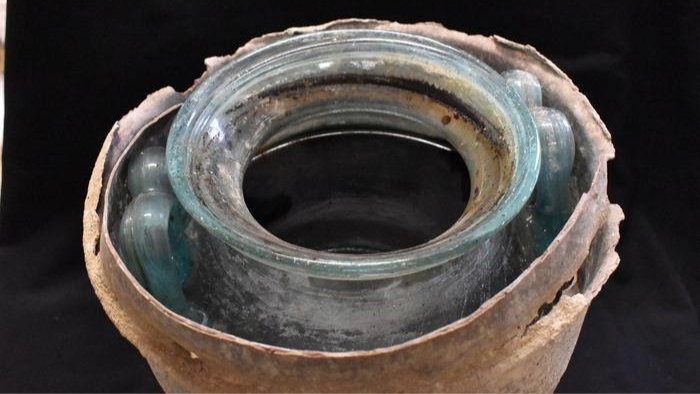2,000-year-old funerary urn found in Spain contains the world's oldest known liquid wine
Scientists discovered the oldest known wine in liquid form inside a Roman-era tomb in Spain.

Archaeologists in Spain have discovered the world's oldest known liquid wine in an unexpected place: mixed with ashes inside a Roman-era funerary urn, a new study finds.
The wine, which the scientists described as "reddish liquid" in appearance, was found in a roughly 2,000-year-old tomb during a house construction project in Carmona, a town in Seville, in 2019.
The use of wine in Roman-era burial rituals is well documented, but discovering a wine sample this old, in its liquid state, was "rather exceptional and unexpected," the scientists wrote in their paper, published June 16 in the Journal of Archaeological Science: Reports.
"It's a sunken tomb that was excavated from the rock, which allowed it to remain standing for 2,000 years," José Rafael Ruiz Arrebola, an organic chemist at the University of Córdoba and a senior author of the study, told The Guardian.
Wine contains distinct chemical compounds that reflect not only its flavor and appearance but also its origins. But after many years, these chemicals often undergo substantial decay that makes them difficult to characterize, the scientists wrote in the paper.
During the funerary ritual, cremated ashes were mixed with the liquid, making it murky, the scientists told The Guardian.
Using analytical techniques including high-performance liquid chromatography and mass spectrometry, the scientists sifted through element-by-element to find components that belonged to the liquid.
Get the world’s most fascinating discoveries delivered straight to your inbox.
Wine grapes contain distinct plant compounds known as polyphenols that serve as a "barcode," marking their varietal and the conditions in which they were grown and harvested. However, "few studies have been conducted on polyphenols in archaeological wine remains," the scientists wrote in the study.
When the scientists found polyphenols in the liquid sample, their suspicions were confirmed — the ancient liquid was indeed wine.
From looking at historical texts, they suspected that the wine would have been similar to modern fino wines produced from regions in southern Spain. The scientists compared the polyphenol content of the ancient wine to today's wines to determine that the wine was likely from Doña Mencía, a city in southern Cordoba.
While the liquid is reddish, it lacked syringic acid, a compound that is produced by red wine when it decomposes, which confirmed that the original wine was actually white.
Despite having mostly decayed, the ancient wine isn't, "the least bit toxic," according to microbiological analyses, Arrebola told The Guardian. Nevertheless, the scientists did not taste it.
Other ancient wine analyses have focused on dried remnants, such as the 8,000-year-old fingerprints of tartaric acid, a compound of grapes and wine, found on a clay jug in the Republic of Georgia. Because the new study analyzed liquid wine, this discovery is one of a kind.
"We have been lucky to find it and analyze it — it's something you only see once in your life," Arrebola told CNN.

Kristel is a science writer based in the U.S. with a doctorate in chemistry from the University of New South Wales, Australia. She holds a master's degree in science communication from the University of California, Santa Cruz. Her work has appeared in Drug Discovery News, Science, Eos and Mongabay, among other outlets. She received the 2022 Eric and Wendy Schmidt Awards for Excellence in Science Communications.


